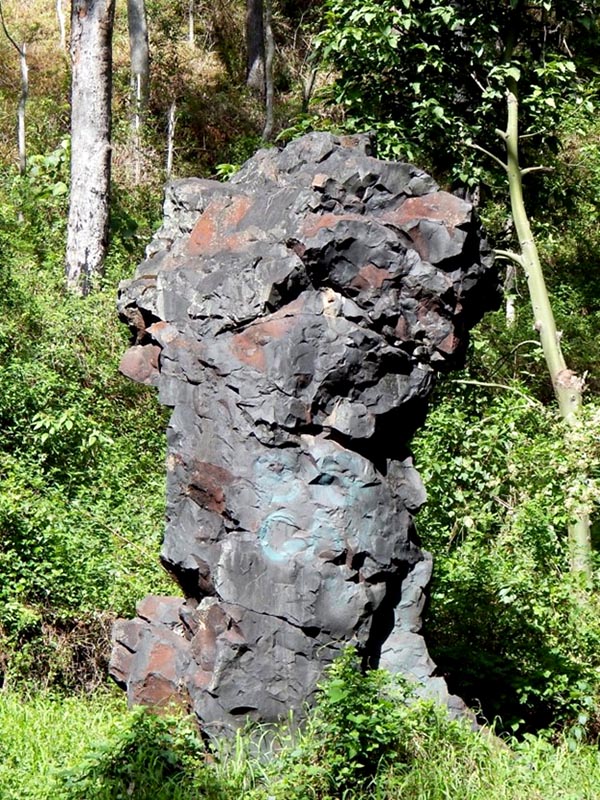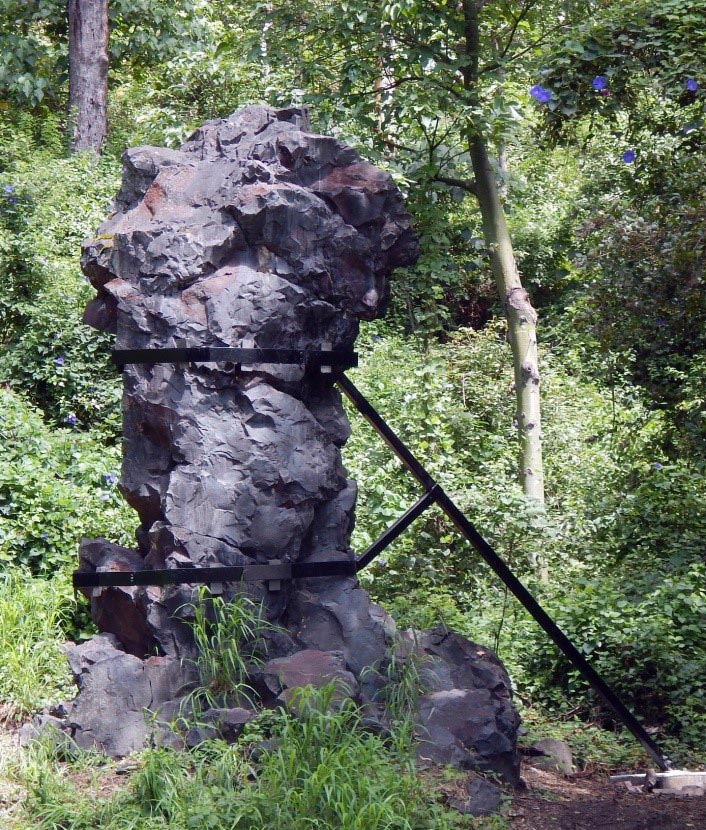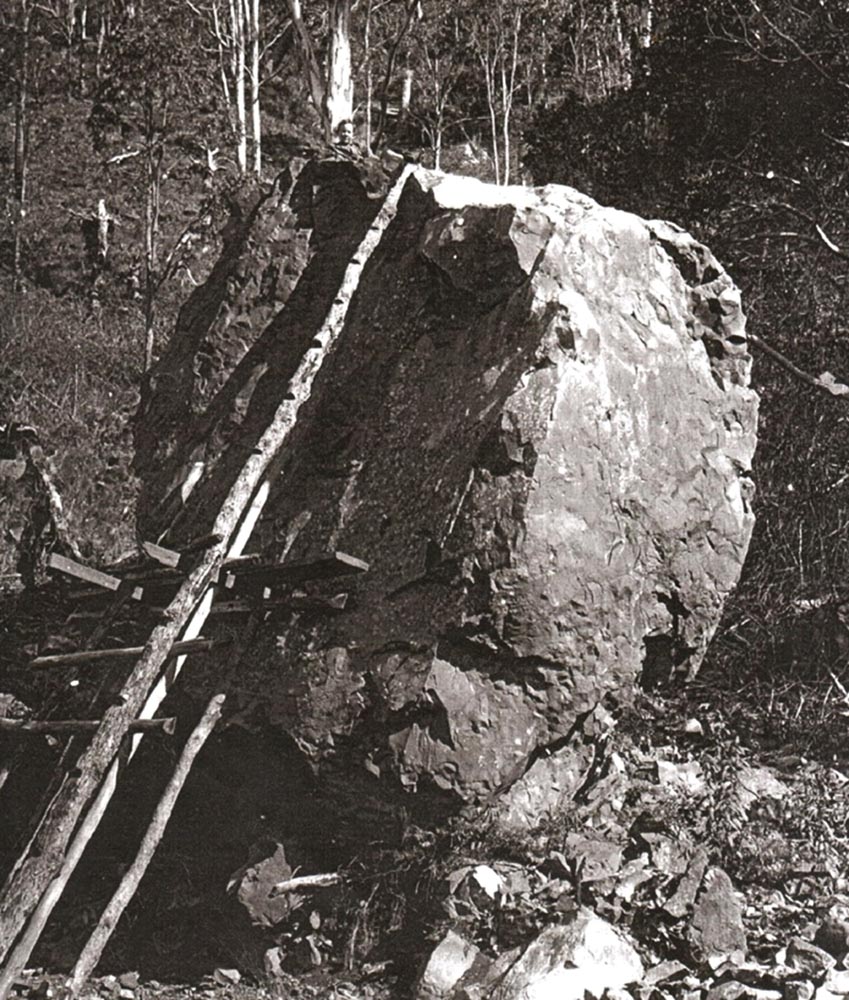The Sentinel rock formation which stood on Tamborine Mountain Road for almost 100 years was unfortunately destroyed last month – and not by an act of nature but rather by an act by the Department of Main Roads. So in this edition, we would like to pay homage to the large rock monument by noting its historical value and significance with extracts from a piece provided by the Tamborine Mountain Historical Society:
Land selection was opened up on Tamborine Mountain in 1875, with official settlement of Mount Tambourine commencing in 1878. The first wave of settlers established walking and bridle tracks through the rainforest to reach their land selections, clearing land to grow bananas and fruit (and later dairy produce) for the Brisbane markets. In July 1918, the Tamborine Mountain Progress Association, anxious to improve access to markets for the increasing number of dairy farmers and fruit growers on the mountain, urged Tambourine Shire Council to construct a ‘good road’ down the mountain to link North Tamborine with the Tamborine Railway Station.
The Queensland State Government established the Main Roads Board in 1920 to oversee the construction of connecting roads and bridges and to provide funding to the local authorities involved. Tamborine Mountain Road was gazetted on 16 December 1921 as one of Queensland’s first seven main roads, and funds were made available to Tambourine Shire Council for its construction, noting Mr Crawford as the designer and engineer.
The road linking Sandy Creek to the Tamborine Railway Station was completed in 1925. Tambourine Shire Council then asked the Main Roads Commission to bitumen the road surface to reduce maintenance costs. This was also done and Tamborine Mountain Road became the first bitumen road in Queensland outside Brisbane.
In 1930, when changes to the Main Roads Act permitted the levying of tolls on roads with high maintenance costs, Tamborine Shire Council paid £500 to have a Toll Keeper’s House erected at Sandy Creek. Tamborine Mountain Road was one of the first three Queensland main roads/bridges to have a toll imposed under the provisions of the Act. It was anticipated that tolls from tourist vehicles would contribute to the repayments to the local authority but the toll was uneconomic and also disliked and was ultimately removed in 1945.
Since Tamborine Mountain Road’s construction in the 1920s, a large basalt monolith has stood beside the road at the upper S bend as if on guard to monitor passing traffic. As part of a larger bolder and too heavy to move, it became a unique local landmark. Known lately as ‘The Sentinel’, it has had many names throughout the years such as ‘Lot’s Wife’ and earlier it was known to some locals as ‘Monument Rock’ and ‘Meteor Rock’. It has also been referred to as ‘Bee Rock’ on one old unofficial map however the connection for that name is not obvious.
Starting life in solid form many eons ago after the cooling of the Mt Warning volcanic lava flow, it most likely tumbled to its position from the above escarpment. It was then much larger and rounded, being roughly four to five metres in diameter. Sitting where it was, it naturally caught the eye of the road builders who would have been scouring the area for all available material to use in road base, which was processed in the nearby rock crushing plant. It was drilled into and blasted with explosives until finally the workers gave up! Perhaps it proved too tough or possibly they had enough rock, but what remained left standing was as a monument to their efforts.


Sadly in 2024 it is no more, (almost making 100 years!) but perhaps its pieces can be retrieved so artists of the mountain and local area can create lasting tributes to its many years of standing guard on Tamborine Mountain Road.
